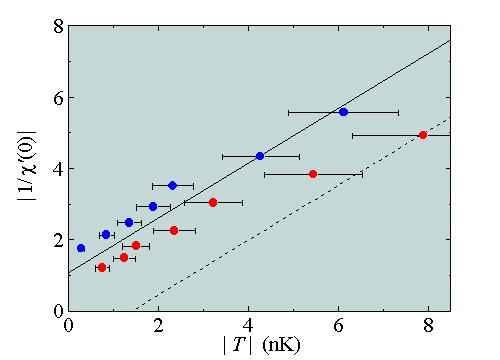
FIGURE Absolute value of the
inverse static susceptibility of rhodium spins vs.
the absolute value of temperature measured at T
> 0 (· ) and at T
< 0 (· ). The solid line
is the Curie-Weiss law with an offset of – 1.4 nK,
while the dashed line is the corresponding
ferromagnetic susceptibility for T < 0.
|
In contrast to the
exclusive ferromagnetic behavior of silver at T
< 0, Rh displays a cross-over from ferro- to
antiferromagnetic tendency around –5 nK [PRL70, 2818 (1993)].
Such behavior is possible in a fcc lattice with an
appreciable next nearest neighbor interaction; in this
case both the minimum (T > 0) and maximum (T
< 0) energy states are anti-
ferromagnetically ordered. Owing to close
competition between nearest and next nearest neighbor
interactions, no ordering was observed in rhodium in spite
of the record of low temperture of 280 pK
produced in these experiments. Nor was ordering achieved
at the record-high temperature of –750 pK
(Both records were held over 1993 - 2000). |
